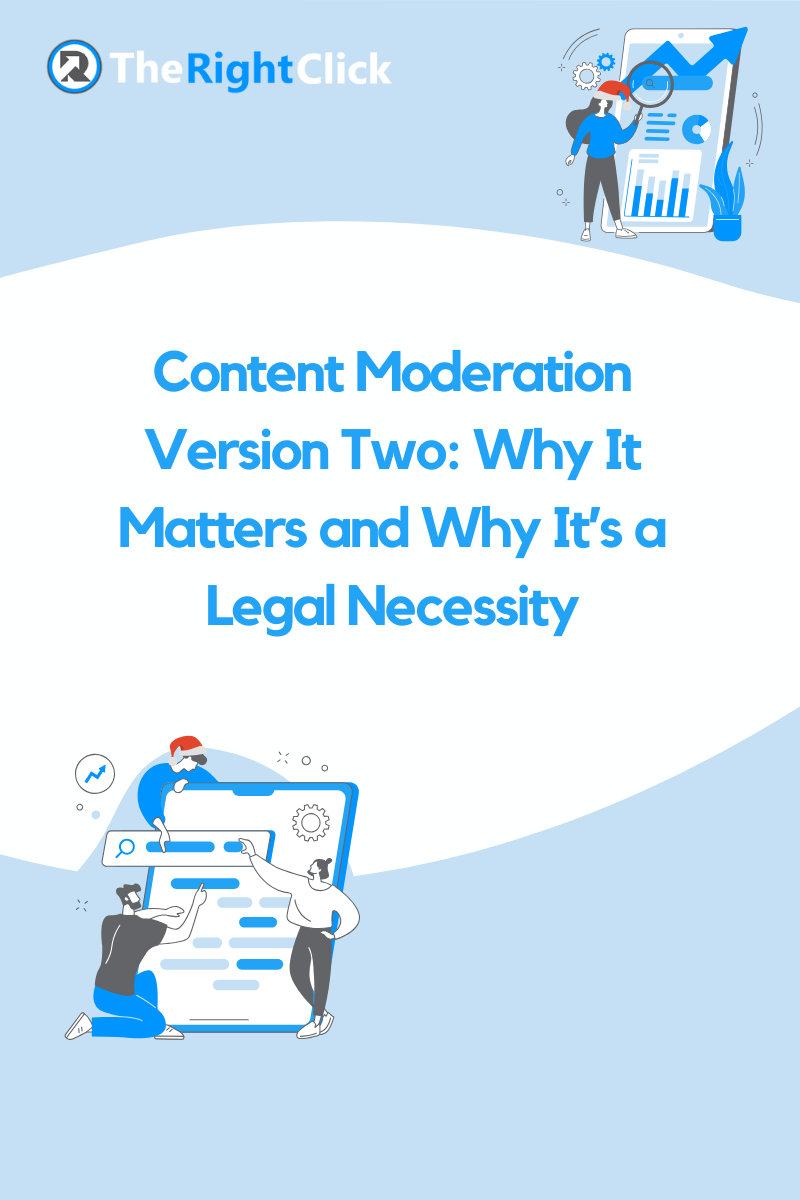Content Moderation Version Two: Why It Matters and Why It’s a Legal Necessity
As digital platforms grow, managing content effectively is more critical than ever. Content Moderation Version Two (CMv2) is an advanced system designed to make online spaces safer, more inclusive, and legally compliant. Unlike older methods that relied on simple filters or human reviewers, CMv2 uses cutting-edge technologies and human expertise to handle content with a higher level of accuracy, efficiency, and care. This next-generation approach ensures platforms can respond to modern challenges while keeping users and businesses protected.
What Is Content Moderation Version Two?
CMv2 is the next stage in moderating online content. It combines artificial intelligence (AI), machine learning, and human input to proactively monitor, manage, and remove harmful or illegal material. Unlike older systems, which often relied on static filters or delayed human reviews, CMv2 introduces a dynamic and adaptive framework that evolves with user behaviour and global trends.
Key features include:
- Contextual Understanding: AI analyses not just words, but the intent and context behind them. For example, it distinguishes between harmful language and harmless satire, significantly reducing errors in moderation decisions.
- Proactive Moderation: CMv2 doesn’t wait for content to be flagged or reported. Instead, it detects and neutralises harmful trends, such as the spread of misinformation or hate speech, before they can escalate.
- Localised Rules: One of the biggest challenges for global platforms is meeting the cultural and legal requirements of different regions. CMv2 is customisable, allowing platforms to enforce moderation rules that respect local laws and social norms.
- Empowered Users: CMv2 provides users with tools to personalise their experience. For instance, they can activate stricter filters for certain types of content or block interactions they find offensive.
With these features, CMv2 moves beyond reactive moderation, making content management smarter, fairer, and more inclusive for everyone.
Why Is Content Moderation Legally Required?
In today’s regulatory environment, platforms are no longer free to operate without accountability for the content they host. Governments worldwide have introduced strict laws to ensure online safety and hold platforms responsible for managing harmful or illegal content.
Some key examples include:
- The EU’s Digital Services Act (DSA): This legislation requires platforms to remove illegal content, such as hate speech or terrorist propaganda, swiftly. Platforms that fail to comply risk fines of up to 6% of their global revenue, making non-compliance a costly mistake.
- Australia’s Online Safety Act: Platforms must remove harmful material, including cyberbullying, violent content, and non-consensual imagery, or face severe penalties, including being banned from the country.
- India’s IT Rules (2021): These rules mandate the prompt removal of flagged content and require platforms to appoint grievance officers to address user complaints. Non-compliance can result in fines and even criminal liability for platform executives.
- United Kingdom’s Online Safety Bill: This proposed legislation aims to make platforms responsible for protecting users from harmful content, particularly children. Platforms will need to demonstrate that they have effective moderation systems in place.
Without proper content moderation, platforms risk significant penalties, lawsuits, and reputational damage. CMv2 ensures compliance by offering accurate, scalable, and adaptable solutions that align with these legal requirements.
Why CMv2 Benefits Everyone
While legal compliance is a primary driver, the benefits of CMv2 extend far beyond avoiding penalties. This advanced approach has a positive impact on users, businesses, and the broader digital ecosystem:
- Safer Communities: CMv2 reduces harmful behaviours such as cyberbullying, hate speech, and the spread of misinformation. This fosters healthier, more welcoming online spaces for all users.
- Better Accuracy: By analysing the context of content, CMv2 minimises false positives (innocent content being flagged) and false negatives (harmful content being missed). This improves user trust and reduces frustration.
- Stronger Trust: Safer environments encourage users to engage more with platforms, building long-term loyalty and community growth. When users feel protected, they are more likely to contribute positively.
- Advertiser Confidence: Brands are more willing to advertise on platforms that ensure their ads are displayed in a safe, brand-friendly environment. CMv2 gives businesses peace of mind, helping platforms attract premium advertisers.
For businesses, these benefits translate into higher engagement, improved user retention, and reduced risks. CMv2 is a win-win for users and platforms alike.
Conclusion: A Legal and Moral Imperative
Content Moderation Version Two is not just an upgrade—it’s a necessity in today’s digital landscape. It addresses the growing complexity of moderating content at scale, while ensuring compliance with global regulations. Platforms that fail to adopt effective moderation not only put their users at risk but also expose themselves to serious legal and financial consequences.
By embracing CMv2, platforms can create safer, more inclusive spaces, build user trust, and strengthen their reputation. In a digital world that demands accountability, CMv2 isn’t just the smart choice—it’s the right one.

